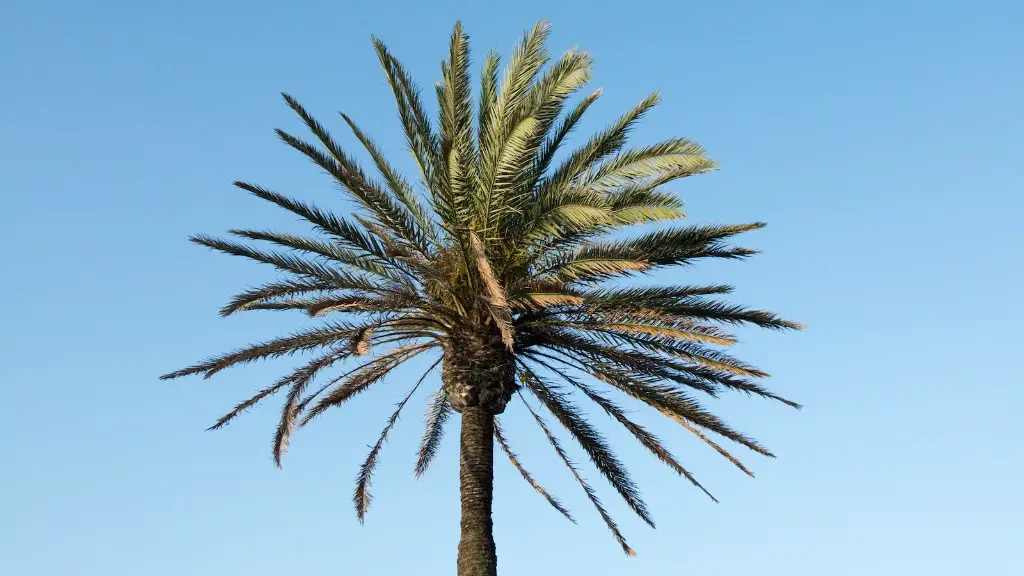How to make a palm tree painting
Painting palm trees is an easy way to create a beautiful piece of artwork that displays the relaxation and power of nature. From beach scenes to modern art, palm trees can bring an exciting atmosphere to any canvas. Follow these steps to make a realistic and creative painting of a palm tree.
Firstly, gather the tools and materials that you need. You need a canvas, carbon paper, markers, paint, and brushes. Depending on the kind of painting you want, you can also use watercolor, gouache, or oil paint. Next, set up a still life of a palm tree. If you don’t have a real palm tree available, you can use photographs to get the look and feel of the painting.
Then, trace the outline of the tree and the leaves onto the canvas. On the reverse side, place the carbon paper underneath the canvas and trace the drawing onto it. This will ensure that you have a clean, accurate outline of the palm tree. Now begin to lay down the base colors and shadows between the trees. If you are using oil or acrylic paints, be sure to let the layers dry before moving onto the next step.
When the base layers are dry, it’s time to go in and add details to your painting. Start off by painting in some highlights and shadows on the leaves and bark of the tree. To add extra realism to the painting, try to make sure that your shadows are slightly darker than your highlights. You can also add grasses, rocks and other elements around the canvas to give context to your painting.
Finally, it’s time to finish the painting. Use a layer of varnish or gloss to add a realistic and finished look to your painting. This helps protect the paint and ensure that your painting looks as beautiful as when it was first painted. To give a dramatic effect to the painting, add splashes of acrylic or glitter to bring out the colors of the painting. With these steps, you will end up with a beautiful palm tree painting.
Making Shapes
A key aspect of painting palm trees is the shape of the tree and the leaves. To paint realistic trees, use a round brush and paint the shapes of the leaves with long strokes. Start from the middle of the palm tree and work outward, overlapping each brushstroke. Once the painting is dry, highlight the edges of the leaves by lightly adding a bit of white paint.
Adding Different Textures
Adding different textures on the palm tree painting will give it an interesting depth. Instead of just painting with acrylics or oil paints, you can also add sand or glitter to the canvas. This will give the painting a sense of sparkle, while also adding a subtle level of texture. If you want to add a realistic effect to the bark of the palm tree, you can use chunky brushstrokes. This will create an illusion of the tree being rough and layered.
Layering the Painting
Layering your canvas will help with making a realistic painting. Start by using a base layer of oil paint. This will cover up any texture in the canvas so you can better focus on painting the details of the palm tree. After this, you can use watercolors or gouache to make the painting more vibrant. Once you are done with the details, you can use a glossy finish to make the painting shine.
Using Contrasts
Using contrasts in your painting will help bring it to life. If you want to make the shadows look deeper, use a warm color in the highlights and a cool color in the shadows. This will add drama to the painting and make the colors look more vibrant. You can also use colors that complement each other—using red and green together, for example, will give your painting a tropical look.
Using Props
Props are a great way to give your painting a unique and realistic look. If you are painting a beach scene, add a few shells, sea rocks, and starfish. If you are painting a painting of a palm tree in the desert, add some browns, oranges, and tans to the painting. These colors and textures will bring the painting to life and give it a touch of realism.
Using Focal Points
When painting a palm tree, it is important to keep the focus on the tree. To create a focal point, add brighter colors or bolder textures around the palm tree. You can also paint a sunburst or stars above the tree to create an interesting effect. By creating these focal points, you will draw the onlooker’s eye to the palm tree and make your painting stand out.

